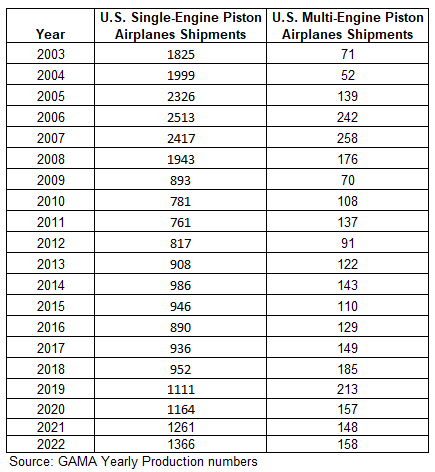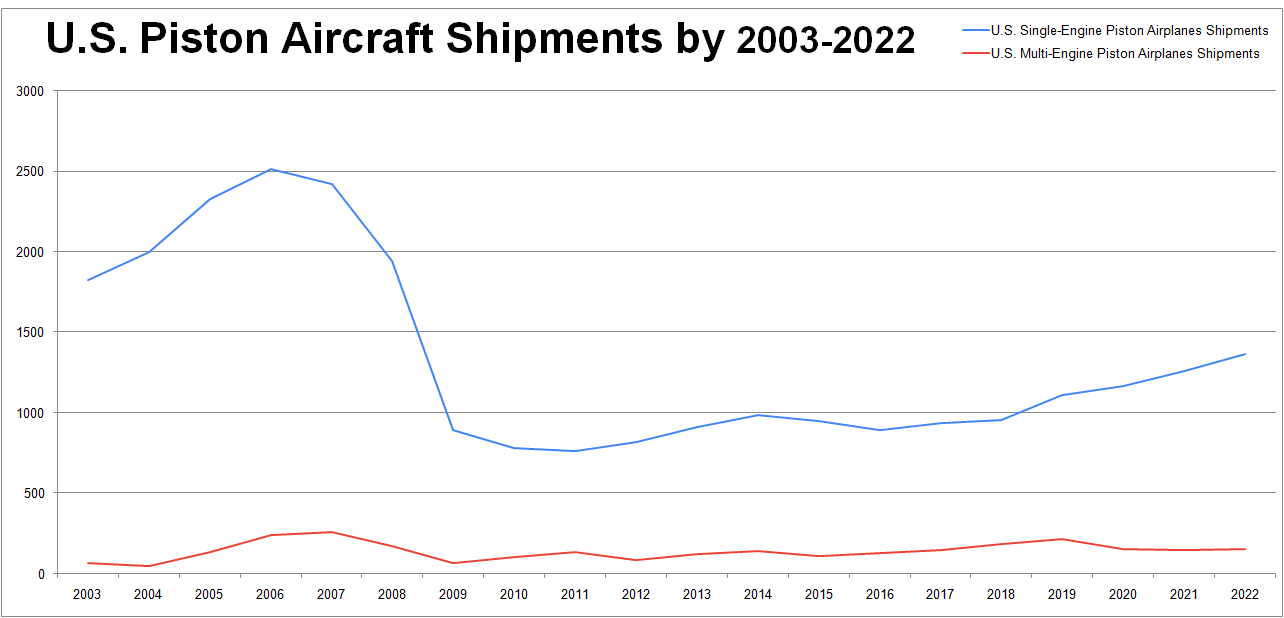Aircraft are a critical component of the business infrastructure of flight training. If we look back in history, we used to produce LOTS more aircraft per year. But times have changed. If we look at the graph below, we see the major dropoff in production numbers for single- and multi-engine piston aircraft in the United States that happened in the early 1990’s. Our numbers never returned to that level.
 And they may never. The market has changed. But that doesn’t necessarily mean that what we are currently producing will meet the needs of the flight training efforts in the United States going forward either.
And they may never. The market has changed. But that doesn’t necessarily mean that what we are currently producing will meet the needs of the flight training efforts in the United States going forward either.

When we look at more recent years, we see much lower shipment numbers of both categories. The table to the right, and the graph below, show this vividly.
This begs a question though, why?
Is there not enough demand for aircraft for large manufacturers to dedicate the production process to more aircraft? Is there not enough demand for manufacturers to invest in expanded capacity?
When we think about manufacturing production capacity, I get it. Businesses build things that they will sell more of that have the largest profit margin. If we can’t make the case in the flight training community that this is not something that we offer in our purchasing efforts, we might need to approach how we communicate with manufacturers from the flight training community better.
Many flight training providers are still using aircraft that were produced in the heavy production years from the 1970’s and 80’s. These aircraft are wearing out, they are becoming harder to maintain, and their dispatch reliability is simply less profitable than newer aircraft. As our industry transitions from these older legacy aircraft, we will need to replace them with new fleets. That means that new fleets need to be available.
Multi-engine aircraft are of specific concern for many flight training providers. While most primary training is completed in single-engine aircraft, there is still a need to get multi-engine pilot certification for career path pilot training. Many flight training providers keep piecing together old, legacy, and hard-to-maintain aircraft just to keep their multi-engine training even available. The production numbers of multi-engine aircraft are likely very short of the industry’s needs for the future.
I can’t help but think that there are opportunities here available for some manufacturer to really corner the market on the next generation of flight-training aircraft if they invest and work with the flight-training community.